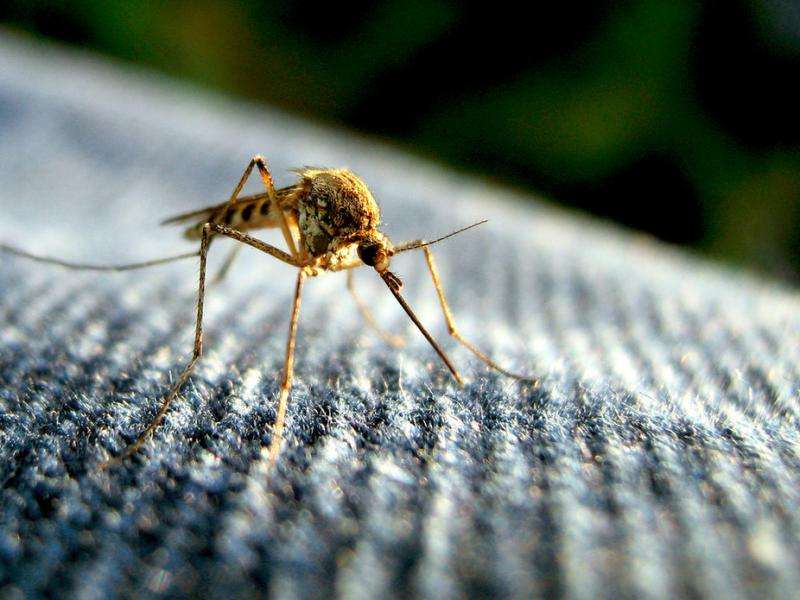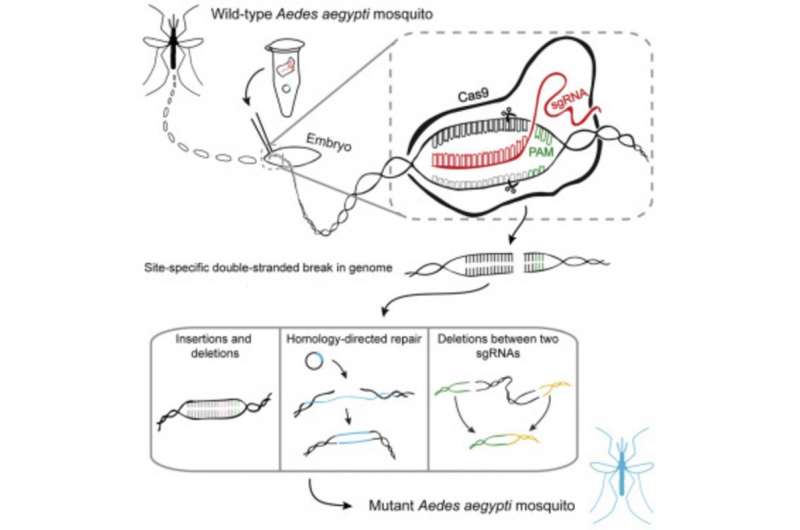When evolution and biotechnologies collide

Since 2012, genetic engineering has been revolutionised by CRISPR-Cas9 gene-editing. The technology is based on an enzyme from a bacterial cell, whose work is to cut the information storing system of living beings, DNA, at one predefined location. It generates a gap within the DNA. Then, a new sequence – for example, a gene from another organism – can be included.
Such a simple and inexpensive technology has made the creation of genetically modified organisms (GMOs) much easier. More interesting, including the gene of the Cas9 enzyme to the genome made the cell able to do by itself this cut-and-insert process. The technique, called "gene drive", can propagate a new gene in the whole population of organisms in a few generations. Once the introduced gene is installed in the population, one may call them… GMOs. One of the most promising application would be to eradicate mosquitoes by spreading mutations that cause infertisity, but as explained in a 2017 article in the journal Nature, can be thwarted by evolution itself.
Arms race with bacteria
This is not the first time that evolution itself makes life hard for genetic engineering and biotechnology. One of the most important revolutions in human health was the industrial production of antibiotics. After World War II, western countries used them to fight human diseases but also to promote industrial agriculture and breeding. A basic rule of living beings' development is that species can ingest only a limited quantity of food and must face trade-offs between three main biologic functions: growth, reproduction and survival. This is true for domestic species as well but the existing trade-offs might not be to the liking of industries. Allocating more resources to one function inevitably leads to reduced performances of the other two.

Farmers had long before noticed that castrating young bulls turned them into steer that grew and fattened up faster. In the same way, the use of antibiotics decreased the stimulation of the immune system and enabled breeders to select fast-growing but less-resistant animals. Combined with industrial breeding relying on high densities of genetically similar individuals, the massive use of antibiotics is required to protect them against disease. In France, 40% of produced antibiotics are consumed by animals. Combined with the human consumption, bacteria have been exposed to a huge selective pressure or ways to survive antibiotics. Thus, many strains developed antibiotic resistances. Now, the emergence of multi-resistant infectious bacteria strains is a signficant concern in public health policies.
The fragility of homogeneity
A similar situation is observed in in agriculture. Increasing mechanisation and specialisation turned the landscape of polyculture windbreaks into endless fields of monoculture. Such a biomass of a few poorly genetically divers plants cultivars is a bonanza for pathogens and insects: if one gets infected, the next one is likely to be feeble too. In addition, crops were selected to have the highest yield, supported by a massive use of fertiliser and pesticides. Thus, the new cultivars are sensitive plants and poor competitors compared to weeds. The industrial agriculture was championed by GMOs, especially in North and South America. Crops producing toxins that killed caterpillars or were resistant to herbicide such as glyphosate were only efficient for a few years. Like bacteria, targeted insects and weeds evolved resistances in one or two decades.
And the resilience of nature
By the same way, using the new CRISPR-Cas9 gene editing technology to modify or eliminate wild populations will not work forever and can also disturb the ecosystem. The large size of the targeted population, their short life cycle and the heavy selective pressure applied lead to huge adaptive advantages of resistant mutants that quickly spread in the population. Ecosystems are the outcome of billion years of evolution of complex networks of interacting species, thus building disease or pests managements technologies and policies without taking into account evolution must must fail in the long term.
Journal information: Nature
Provided by The Conversation
This article was originally published on The Conversation. Read the original article.![]()




















